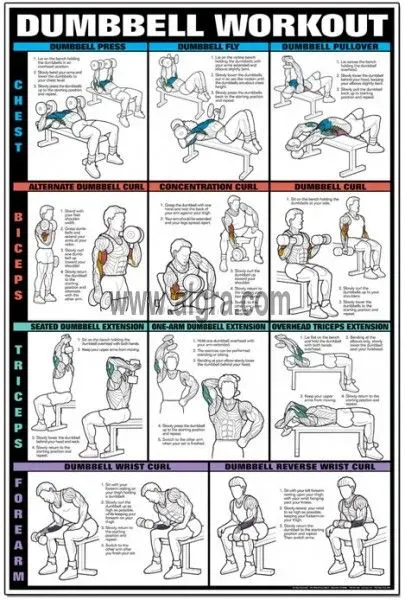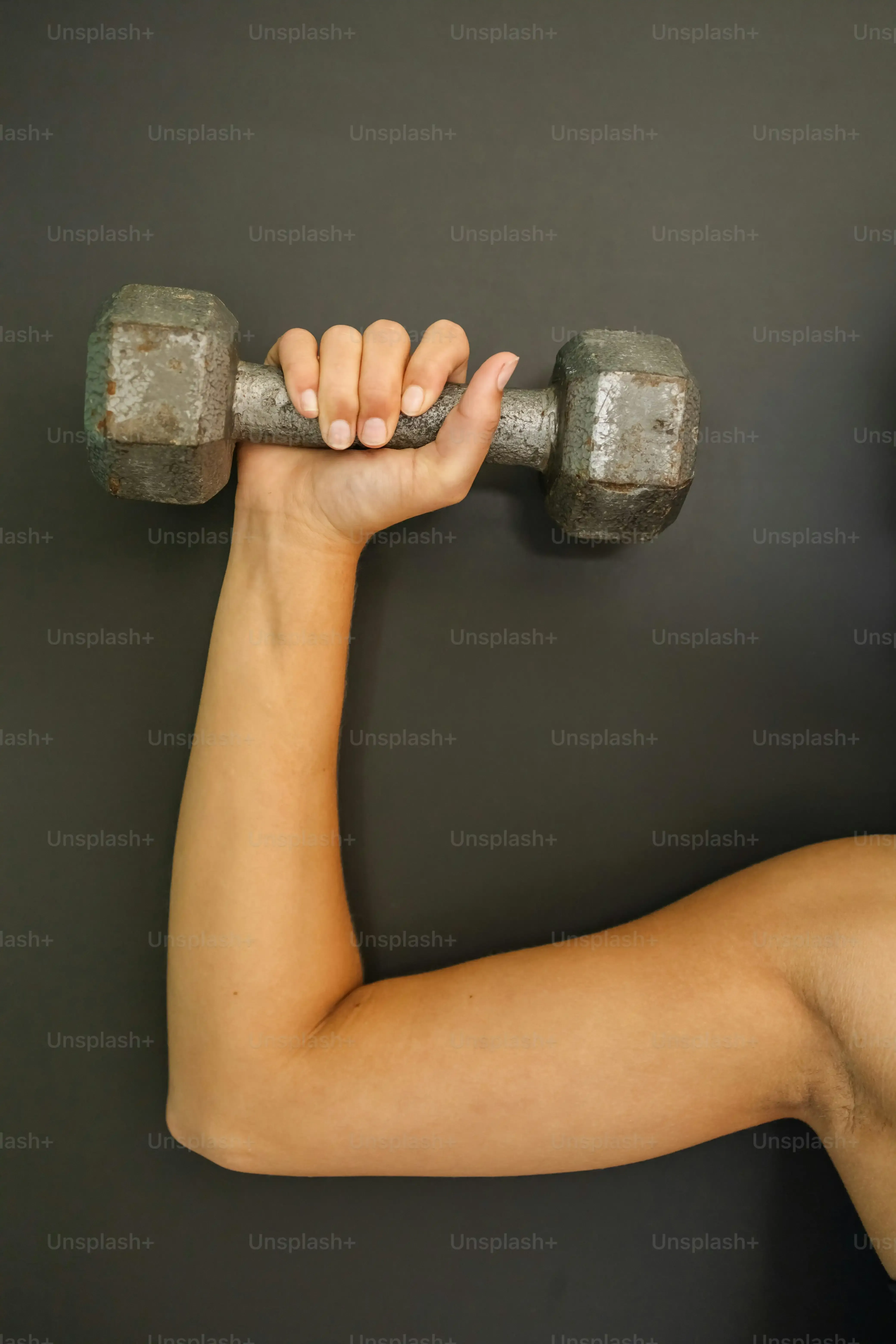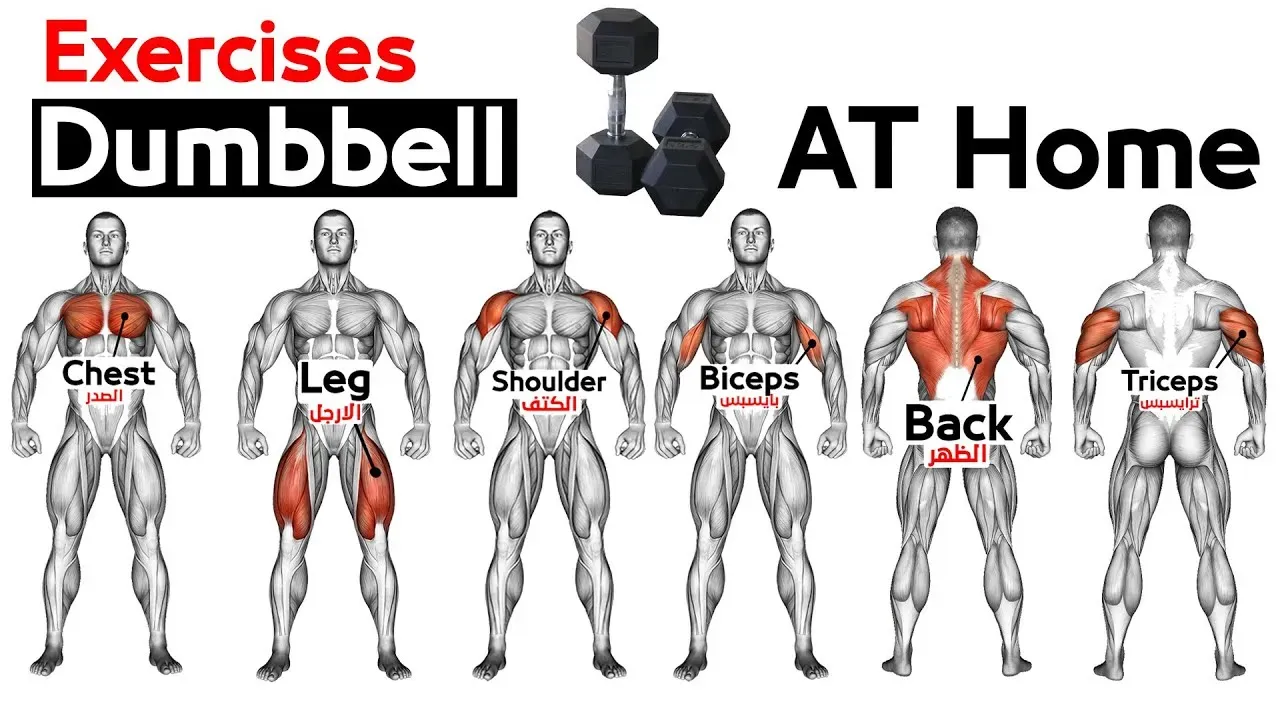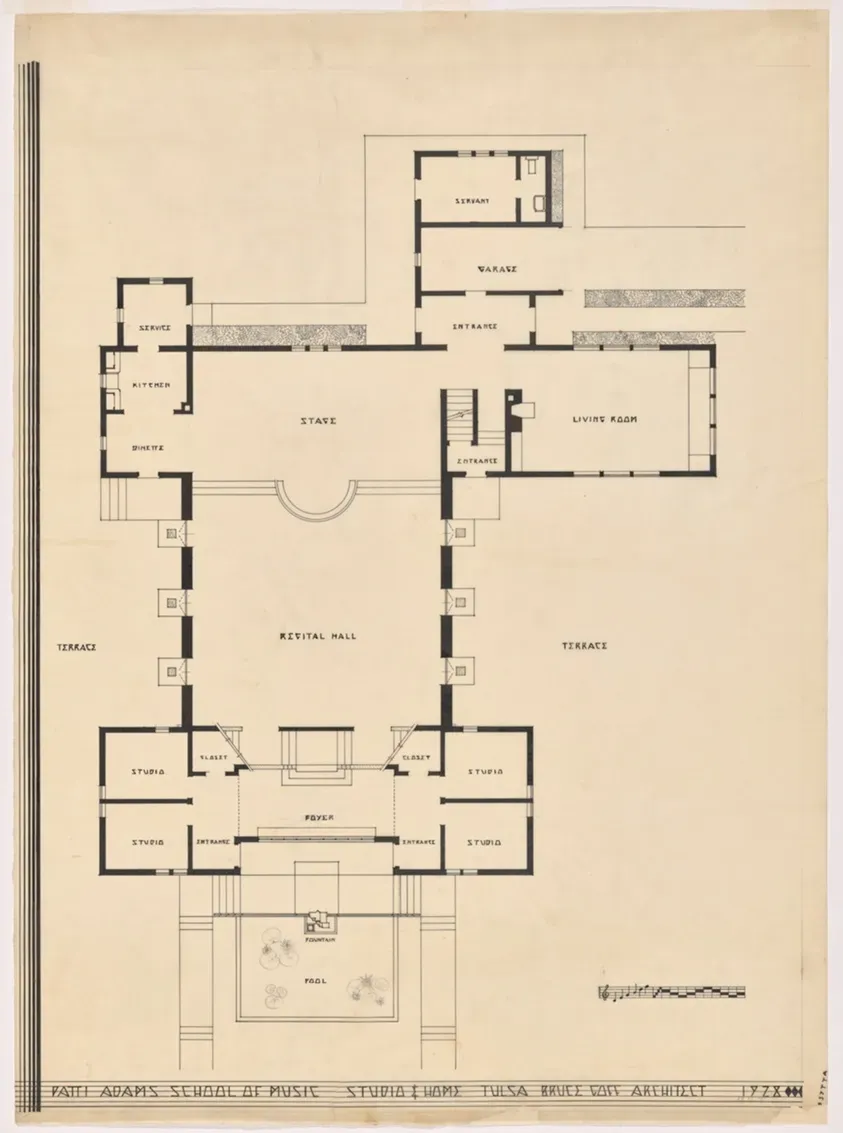Table of Contents
Tired of looking like you skipped arm day? Wish you could build a solid upper body without trekking to a crowded gym? You're not alone. Many people struggle to find effective ways to build muscle outside of a dedicated fitness facility, often thinking they need racks of weights and complex machines. But what if I told you all you really need are two dumbbells and a bit of floor space? This article cuts through the noise to give you a practical, no-nonsense approach to hitting those key upper body muscles.
Why Pair Chest and Biceps? Understanding the PushPull Connection

Why Pair Chest and Biceps? Understanding the PushPull Connection
Alright, let's talk strategy. When you're building a workout, especially a biceps and chest workout at home with just two dumbbells, thinking about muscle pairings is key. Why lump chest and biceps together? It boils down to the basic push-pull dynamic. Your chest muscles are primary movers in pushing movements – think pushing weight away from your body, like in a bench press. Your biceps, on the other hand, are all about pulling – bringing weight towards your body, like in a curl. Training these opposing muscle groups in the same session can be surprisingly efficient. While your chest recovers from a set of presses, you hit your biceps with curls, and vice versa. It’s like giving one system a break while the other is actively working. This approach allows for intense work on both muscle groups without completely fatiguing the same movement pattern, making your workout time highly productive. Understanding this push-pull connection is fundamental to crafting effective training splits, especially when your equipment is limited and you need to make every minute count.
Your GoTo Biceps and Chest Workout at Home with 2 Dumbbells

Your GoTo Biceps and Chest Workout at Home with 2 Dumbbells
Structuring Your Home Workout
so you've got your two dumbbells and you're ready to hit it. How do you actually structure a decent biceps and chest workout at home with 2 dumbbells? You don't need a complicated split or fancy equipment. A simple approach works best here. Think about alternating between a chest exercise and a biceps exercise. This allows one muscle group to recover slightly while the other is working. You can do sets of one exercise, rest briefly, then do sets of the other, or even alternate sets directly. For example, a set of dumbbell presses, rest, then a set of dumbbell curls, rest, and repeat. This keeps the intensity up and makes efficient use of your time and limited gear. Aim for 3-4 sets per exercise to really challenge the muscles.
Essential Exercises for Your Home Gym
Now, let's talk specifics. What moves give you the most bang for your buck in this biceps and chest workout at home with 2 dumbbells? For the chest, the dumbbell floor press is your best friend. You lie on the floor, dumbbells in hand, and press them straight up. The floor stops your elbows, which is actually safer for your shoulders when you don't have a bench. It hits the chest effectively. For biceps, the classic standing dumbbell curl is a must. Keep your elbows pinned to your sides, curl the weight up, and squeeze at the top. These two simple movements form the backbone of this routine. Don't overthink it; foundational exercises build foundational strength.
- Dumbbell Floor Press: Targets chest (pectorals), triceps, and shoulders.
- Standing Dumbbell Curl: Targets biceps (biceps brachii).
- Incline Dumbbell Press (if you have an incline surface): Shifts emphasis to upper chest.
- Hammer Curl: Hits biceps and forearms differently than standard curls.
Putting It All Together: Sets, Reps, and Rest
So you have the structure and the main exercises. How many times should you do them? For building muscle, aiming for 8-12 repetitions per set is a solid range. If you can easily do more than 12 with good form, your dumbbells might be too light, or you need to increase the challenge somehow (like slowing down the tempo). If you can't get at least 8, they're probably too heavy. Rest periods between sets can be relatively short, around 60-90 seconds, especially when you're alternating muscle groups in this biceps and chest workout at home with 2 dumbbells. The goal is to keep the workout moving but allow enough recovery to maintain intensity. Listen to your body, but push yourself within that rep range.
Mastering Form: Getting the Most from Your Biceps and Chest Workout at Home with 2 Dumbbells

Mastering Form: Getting the Most from Your Biceps and Chest Workout at Home with 2 Dumbbells
Why Form Trumps Everything Else
Look, just grabbing the dumbbells and slinging them around might make you feel like you're working hard, but it's a fast track to nowhere, maybe even injury. When you're doing a biceps and chest workout at home with 2 dumbbells, especially without a spotter or fancy machines guiding your path, form is your absolute best friend. Proper form ensures you're actually hitting the muscles you intend to work. It minimizes strain on your joints and connective tissues. Think of it like building a house – you wouldn't start with a wobbly foundation, right? Your body's the house, and good form is the solid ground it stands on. Prioritizing how you move the weight over how much weight you move pays dividends in the long run, leading to better muscle growth and preventing setbacks.
Executing the Dumbbell Floor Press Correctly
Let's break down the dumbbell floor press, a staple for your home chest work. Lie flat on the floor, knees bent, feet flat. Hold a dumbbell in each hand, palms facing each other initially, then rotate them so palms face your feet as you lower. Lower the dumbbells slowly towards your chest, keeping your elbows at about a 45-degree angle from your body. Don't let them flare straight out to the sides; that's a recipe for shoulder issues. Stop when your upper arms touch the floor. This contact point is key – the floor acts as your range limiter, making it safer. Press the dumbbells straight back up, squeezing your chest at the top. Control the weight on the way down and the way up. Don't bounce off the floor. It's about controlled movement, not speed.
- Keep your lower back pressed into the floor (or maintain a natural, slight arch if comfortable, but avoid excessive arching).
- Control the eccentric (lowering) phase; don't just drop the weights.
- Focus on feeling the chest muscles doing the work.
- Avoid letting your wrists bend backward excessively.
Nailing Your Dumbbell Curls
Now for the biceps part of your biceps and chest workout at home with 2 dumbbells – the curl. Stand tall, feet shoulder-width apart, holding a dumbbell in each hand, arms hanging straight down, palms facing forward (supinated grip). Keep your elbows pinned to your sides. Seriously, imagine they're glued there. Curl the dumbbells up towards your shoulders, squeezing your biceps hard at the top. Only your forearms should be moving. Avoid swinging the weight or using momentum from your back or shoulders. That's just cheating your biceps out of the work. Lower the weight slowly and with control back to the starting position, fully extending your arms. Don't let them just drop. The controlled lowering phase is just as important for muscle growth as the lifting part.
Making Progress: How to Level Up Your Biceps and Chest Workout at Home with 2 Dumbbells

Making Progress: How to Level Up Your Biceps and Chest Workout at Home with 2 Dumbbells
When Your Dumbbells Feel Too Light
so you've been doing this biceps and chest workout at home with 2 dumbbells for a bit.
Those weights that felt heavy initially? Now they feel like pool noodles.
This is a good problem to have – it means you're getting stronger.
The most obvious way to progress is to get heavier dumbbells.
But maybe you can't right now.
No sweat.
You can still make those same two dumbbells feel challenging.
Slow down the movement.
Seriously.
Take 3-4 seconds to lower the weight on the floor press or the curl.
Pause at the bottom and the top.
Add a squeeze.
Focus intensely on the muscle contracting.
You can also increase the number of repetitions you do within that 8-12 range, or even push towards 15-20 if your form holds up.
Don't underestimate the power of controlled, mindful reps over just slinging iron.
Implementing Progressive Overload
This is the fancy term for continually challenging your muscles so they have to keep adapting and growing.
For your biceps and chest workout at home with 2 dumbbells, progressive overload is non-negotiable if you want results.
You've already considered increasing reps or slowing tempo.
Another method is increasing sets.
If you were doing 3 sets, try 4.
You can also decrease rest times slightly, forcing your muscles to work while less recovered.
Or, combine techniques.
Do more reps *and* slow down the eccentric (lowering) phase.
Keep a simple log – maybe just a note on your phone.
Write down the exercises, sets, and reps you did.
Next time, try to beat it by one rep or shave off 5 seconds of rest.
It's not rocket science, just consistent effort and smart application of stress.
Here's a quick way to track progress:
- Increase Reps: Add 1-2 reps per set.
- Increase Sets: Go from 3 sets to 4 sets per exercise.
- Decrease Rest: Shorten rest between sets by 15-30 seconds.
- Improve Tempo: Slow down the lowering phase (e.g., 3-4 seconds).
- Add Pauses: Pause for 1-2 seconds at the point of peak contraction or stretch.
Consistency and Listening to Your Body
Look, no single workout, not even a killer biceps and chest workout at home with 2 dumbbells, will transform you overnight.
Consistency is the real magic potion.
Aim to do this workout 2-3 times per week, allowing at least a day of rest in between for your muscles to recover and rebuild.
On those rest days, maybe go for a walk or do some light stretching.
Just as crucial as putting in the work is knowing when to back off.
If something feels sharp or wrong, stop.
Don't try to push through joint pain.
Muscle soreness is one thing; actual pain is another.
Learn the difference.
There will be days you feel stronger and days you feel weaker.
That's normal.
Show up consistently, apply progressive overload intelligently, and pay attention to what your body is telling you.
That's how you keep making gains long-term.
FAQs About Your Biceps and Chest Workout at Home with 2 Dumbbells
Is a biceps and chest workout at home with 2 dumbbells really effective?
Absolutely. Don't let the minimalist setup fool you. While you won't be loading up plates like in a commercial gym, you can still build significant muscle and strength with just two dumbbells. Effectiveness comes down to consistency, proper form, and progressive overload. If you consistently challenge your muscles by doing more reps, more sets, reducing rest, or slowing down the tempo, they have no choice but to adapt and grow. Think of it this way: your muscles don't know if they're lifting a fancy machine or a dumbbell in your living room. They respond to tension and effort. A well-executed biceps and chest workout at home with 2 dumbbells is far superior to skipping your workout entirely because you can't get to the gym.
How often should I do this routine?
Hitting the same muscle groups intensely every single day isn't the smartest plan. Your muscles need time to recover and repair after a workout. For a biceps and chest workout at home with 2 dumbbells, aiming for 2-3 times per week is a solid starting point. Make sure you space out these sessions, allowing at least 48 hours of rest for those specific muscle groups. For example, you could do the workout on Monday and Thursday. On other days, you could focus on legs, back, shoulders (if not hit hard by chest work), or do some cardio or active recovery. Listen to your body; if you're still significantly sore, give yourself another day before hitting chest and biceps again.
- Beginner: 2 times per week
- Intermediate/Advanced: 2-3 times per week, potentially adjusting volume
- Allow at least 48 hours rest between sessions targeting these muscles
What about nutrition and recovery for this home workout?
Training is only one piece of the puzzle. If you're putting in the work with your biceps and chest workout at home with 2 dumbbells but neglecting what happens outside of the workout, you're leaving gains on the table. Muscle growth happens when you're recovering, not when you're lifting. This means getting enough protein – the building blocks of muscle – and consuming sufficient calories overall to support repair and growth. Aim for roughly 0.7-1 gram of protein per pound of bodyweight daily. Sleep is also non-negotiable. Most adults need 7-9 hours of quality sleep per night. This is when your body releases growth hormone and performs crucial repair processes. Hydration is key too. Don't underestimate how much these foundational elements impact your progress, even with a simple home routine.
Wrapping Up Your Home Upper Body Gains
So there you have it. Building a strong chest and impressive biceps doesn't require a gym membership or a garage full of expensive equipment. With just two dumbbells and the focused approach outlined here, you can effectively target these key muscle groups, build strength, and improve your physique right from home. Consistency is your biggest ally, so stick to the plan, focus on your form, and keep challenging yourself as you get stronger. Stop making excuses about lack of equipment and start making progress. Your home gym awaits.
